Five seconds. That’s the average time your eyes leave the road when reading or texting. At 55 mph, you travel the length of a football field essentially blind. In those five seconds, you trusted another driver not to check their phone, not to respond to that notification, not to let their attention wander. But they did, and now you’re dealing with injuries, medical bills, and a life turned upside down by someone who couldn’t wait to send a message.
The anger you feel is justified. That driver made a conscious choice, prioritizing a text message over the safety of everyone on the road, including your own. They knew the risks, they knew the law, yet they picked up their phone anyway. Now you’re paying the price for their moment of selfishness, facing weeks or months of recovery, mounting expenses, and the trauma of a crash that never should have happened.
Texting while driving creates a perfect storm of impairment by engaging all three types of distraction simultaneously. Visual distraction pulls eyes from the road to read messages. Manual distraction removes hands from the wheel to type responses. Cognitive distraction shifts mental focus from driving to conversation. This deadly combination makes texting drivers 23 times more likely to be involved in a crash than focused drivers, according to research from the Virginia Tech Transportation Institute.
The impairment rivals or exceeds drunk driving in many ways. Reaction times slow dramatically. Lane position becomes erratic. Speed control suffers. Drivers miss critical visual cues such as brake lights, traffic signals, and pedestrians. Unlike alcohol impairment, which remains relatively constant during a drive, texting creates repeated cycles of total distraction, each one a potential catastrophe.
Young drivers face particular risks. Teen drivers already lack experience in reading traffic patterns and anticipating hazards. Adding texting multiplies these vulnerabilities exponentially. The Centers for Disease Control reports that drivers under 20 have the highest proportion of distraction-related fatal crashes. Among teen drivers involved in fatal crashes, 10% were distracted at the time of the crash.
Louisiana consistently ranks among the worst states for distracted driving crashes. The Louisiana Highway Safety Commission reports that distracted driving contributes to approximately 25% of all crashes statewide. In 2023 alone, these crashes resulted in 208 fatalities and over 3,200 injuries. Behind each statistic is a family forever changed by someone’s decision to text while driving.
Cell phone use, primarily texting, represents the most common distraction in fatal crashes. Young drivers aged 15-24 account for 38% of drivers using cell phones during fatal crashes, despite representing only 14% of licensed drivers in the United States. These numbers likely underrepresent the true scope, as proving texting without admission or witnesses remains challenging.
The economic toll extends beyond individual victims. Distracted driving crashes cost Louisiana over $1 billion annually in medical expenses, lost productivity, property damage, and legal costs. Insurance rates for all Louisiana drivers increase to offset these losses, meaning everyone pays for texters’ recklessness.
On August 1, 2025, Louisiana implemented House Bill 519, dramatically strengthening penalties for device use while driving. This law moves beyond simply banning texting to prohibit virtually all handheld device use. The comprehensive approach recognizes that any phone interaction, not just texting, creates unacceptable danger.
The law specifically prohibits:
Hands-free calling remains permitted for adult drivers, but the device must be in a fixed position or hands-free mode. Even legal hands-free use becomes illegal if it causes distracted driving behaviors such as lane departure or erratic speed changes.
Louisiana’s new penalties reflect the serious nature of texting while driving:
First Offense:
Subsequent Offenses:
Criminal Consequences: When texting causes serious injury or death, drivers face criminal prosecution under Louisiana Revised Statutes 14:32.1 (vehicular homicide) or 14:39 (vehicular negligent injuring). Convictions bring prison time, substantial fines, and permanent criminal records affecting employment and housing opportunities.
Louisiana’s texting ban operates as a primary law, meaning officers can stop vehicles solely for the observed use of phones. This differs from secondary enforcement states, where another violation must occur first. Primary enforcement significantly increases citation rates and compliance.
Officers use various methods to identify texting drivers:
Texas maintains similar primary enforcement for texting while driving under Transportation Code Section 545.4251. Penalties include fines up to $99 for first offenses and $200 for repeat violations. Causing serious injury or death while texting triggers enhanced penalties under Texas Penal Code Section 49.
Establishing that another driver was texting requires strategic evidence gathering. Unlike alcohol impairment with chemical tests, texting leaves primarily digital footprints requiring legal processes to uncover. Successful cases combine multiple evidence types, creating compelling proof of distraction.
Cell Phone Records: Subpoenaed phone records reveal the exact timing of calls, texts, data usage, and app activity. These records demonstrate device interaction at the time of the crash. Carriers maintain detailed logs showing not just text messages but all phone activity, including social media access, email, and web browsing.
Vehicle Telematics: Modern vehicles record extensive data, including speed, braking, steering inputs, and sometimes phone connectivity. Event data recorders capture the seconds leading up to impact, potentially revealing driver responses consistent with distraction. Some systems log Bluetooth connections and hands-free system usage.
Witness Testimony: Passengers, other drivers, and pedestrians often observe texting behavior before crashes. Their testimony provides powerful evidence, especially when multiple witnesses corroborate observations. Witnesses might describe seeing screen glow, head positions, or one-handed driving patterns.
Physical Evidence: The position of phones in vehicles after crashes provides circumstantial evidence. Phones on the driver’s seat, floorboards near the pedals, or still in hand suggest recent use. Screen damage patterns and activated apps provide additional clues about usage at the time of impact.
Traffic Camera Footage: Intersection cameras, business surveillance, and dashboard cameras increasingly capture texting behavior. This visual evidence proves devastating to the defense’s claims of attention to driving. Even footage showing pre-crash behavior patterns helps establish the presence of distraction.
Social Media Investigation: Posts, messages, or updates timestamped near the time of the crash provide direct evidence of phone use. Screenshots must be captured quickly before deletion. Live streams or stories with location data prove particularly damaging to texting drivers’ defenses.
Insurance companies representing texting drivers deploy predictable strategies to avoid liability. Understanding these tactics helps prepare stronger cases.
“Momentary Distraction” Defense: Insurers argue that brief glances at phones don’t constitute negligence. Louisiana law rejects this argument. Any voluntary distraction violating traffic laws constitutes negligence. Five seconds of texting equals 100 yards of blind driving, far exceeding any reasonable “momentary” definition.
“No Direct Proof” Argument: Without admission or clear evidence, insurers claim texting cannot be proven. Circumstantial evidence, however, carries equal legal weight when reasonably indicating texting. Courts regularly find liability based on timing correlations between phone records and crashes.
“Comparative Fault” Deflection: Insurance companies search for any contributing factor to shift blame. They’ll argue you could have avoided the crash through defensive driving. Louisiana’s comparative fault law (Civil Code Article 2323) allows recovery even with partial fault, though reduced proportionally.
“Emergency Purpose” Claims: Drivers sometimes claim they were handling emergencies justifying phone use. Louisiana law provides no emergency exception to texting bans. True emergencies require pulling over safely or using hands-free options.
“Hands-Free Confusion” Arguments: With hands-free calling legal, drivers claim they were using permitted functions when crashes occurred. Technical evidence distinguishes between hands-free calling and handheld texting, defeating such claims.
Texting and driving crashes often cause severe injuries due to drivers’ complete inattention, preventing any evasive action. Victims frequently suffer multiple traumas requiring extensive treatment and prolonged recovery. Louisiana law recognizes comprehensive damages addressing all impacts.
Immediate Medical Costs:
Long-Term Medical Needs:
Economic Losses:
Non-Economic Damages:
Punitive Damages Potential: Louisiana Civil Code Article 3546 allows for the award of punitive damages when a defendant’s conduct demonstrates a wanton or reckless disregard for others’ safety. Texting while driving, violating explicit safety laws, and other similar actions may qualify for such enhanced damages. While rare, courts have awarded punitive damages in egregious texting cases.
Texting drivers cause most rear-end crashes by failing to notice stopped or slowing traffic. These crashes at full speed create devastating forces, particularly for stopped vehicles. Whiplash, traumatic brain injuries, and spinal damage commonly result. Louisiana’s presumption that rear drivers bear fault strengthens these cases significantly.
Texting drivers miss traffic signals, stop signs, and turning vehicles at intersections. These T-bone collisions expose vehicle sides with less protection, causing severe injuries to occupants. Multiple vehicles often become involved when texting drivers blow through intersections.
Texting at highway speeds multiplies danger exponentially. Lane departures cause head-on collisions or rollovers. The high speeds leave no margin for error and create catastrophic forces during impact. Interstate crashes involving texting often result in fatalities or life-altering injuries.
Texting drivers fail to notice pedestrians in crosswalks or cyclists in bike lanes. These vulnerable road users have no protection against vehicle impact. Such crashes cause traumatic brain injuries, spinal cord damage, multiple fractures, and internal injuries. Urban areas are experiencing an increase in pedestrian strikes due to distracted driving.
When commercial drivers text, the consequences multiply due to vehicle size and weight. Federal Motor Carrier Safety Regulations explicitly prohibit commercial drivers from texting. Violations create additional liability for both drivers and employers. These crashes often involve multiple vehicles and catastrophic injuries.
Texting and driving crash victims often develop post-traumatic stress disorder, anxiety, and depression. The sudden, preventable nature of these crashes creates particular psychological difficulty. Victims struggle with hypervigilance while driving, panic attacks, and an inability to trust other drivers. Professional therapy becomes essential, but adds substantial costs.
Injuries affect entire families, not just direct victims. Spouses become caregivers, sacrificing careers to provide support. Children lose parental involvement during recovery. Relationships strain under financial pressure, and personality changes from traumatic brain injuries. Marriage counseling and family therapy often become necessary.
Serious injuries derail career trajectories. Missed promotions, lost professional relationships, and inability to maintain certifications create lasting impacts. Some victims are unable to return to their previous occupations, necessitating vocational rehabilitation and retraining. The loss extends beyond current wages to lifetime earning potential.
Physical limitations and psychological trauma often lead to social withdrawal. Victims miss important life events, lose friendships, and struggle with previous activities. The isolation compounds depression and slows recovery. Support groups and counseling help, but require time and resources that many victims lack.
Proving texting requires understanding cellular technology, vehicle telematics, and data preservation requirements. Phone companies resist subpoenas. Data gets overwritten quickly. Insurance companies employ experts to dispute technical evidence. Experienced attorneys know how to preserve, obtain, and present technical evidence effectively.
Insurance companies defending texting drivers deploy substantial resources to minimize claims. They hire accident reconstructionists, medical experts, and technology specialists. They conduct surveillance, analyze social media, and investigate victims’ backgrounds. Facing these resources alone puts victims at a severe disadvantage.
Texting and driving cases involve complex legal issues, including:
Experienced attorneys navigate these complexities while protecting clients’ interests.
Evidence disappears quickly in texting cases:
Immediate legal representation ensures crucial evidence gets preserved before it’s lost forever.
For over 40 years, Morris & Dewett has stood with Louisiana families who have been devastated by preventable crashes. We’ve witnessed texting and driving evolve from a rare occurrence to an epidemic threat. Throughout this evolution, our commitment remains constant: holding distracted drivers accountable and securing justice for victims.
Immediate Investigation: We act quickly to preserve disappearing evidence:
Expert Resources: We work with leading experts who strengthen cases:
Aggressive Advocacy: We pursue maximum compensation through:
We handle texting and driving cases on contingency, meaning you pay nothing unless we win. We cover all case expenses, including expert witness fees, court costs, and investigation fees. This arrangement ensures that every victim can pursue justice, regardless of their financial situation.
Our fee structure is transparent and fair. We explain exactly how fees work before you sign anything. No hidden costs, no surprises, just straightforward representation focused on your recovery.
While every case is unique, our track record demonstrates our ability to secure meaningful compensation for victims of texting and driving. We’ve obtained millions in settlements and verdicts, ensuring clients receive resources for medical care, lost wages, and rebuilding their lives.
More importantly, we’ve helped families find closure and justice after preventable tragedies. We’ve forced changes in driver behavior through publicized victories. We’ve provided platforms for victims to share their stories, potentially preventing future crashes.
Louisiana’s one-year prescription period for personal injury claims means time works against you. Evidence disappears. Witnesses relocate. Phone records get purged. Every day that passes makes proving texting more difficult.
Beyond legal deadlines, your recovery cannot wait. Medical bills accumulate interest. Lost wages create financial pressure. Insurance companies use delay tactics, hoping you’ll accept inadequate settlements. The sooner you have experienced advocates protecting your interests, the sooner you can focus on healing.
If a texting driver injured you or killed someone you love, you need answers, and you deserve justice. Morris & Dewett provides both through compassionate, aggressive representation that puts your needs first.
Call us at (318) 221-1508 for a free, confidential consultation. We’ll evaluate your case, explain your rights, and outline paths to recovery. No obligations, no pressure, just honest guidance when you need it most.
Visit our offices throughout Louisiana, or we’ll come to you. Hospital visits, home consultations, and virtual meetings accommodate your situation. Evening and weekend appointments are available because injuries don’t follow business hours.
Email us through our secure contact form if you prefer written communication. Provide basic information about your crash, and we’ll respond promptly with next steps.
That driver chose to text, knowing the risks and breaking the law. Their momentary decision created lasting consequences for you and your family. While we cannot undo the crash, we can ensure you receive full compensation for your injuries and hold the responsible party accountable.
You don’t have to face insurance companies alone. You don’t have to accept their inadequate offers. You don’t have to sacrifice your future because someone couldn’t wait to send a text. Morris & Dewett stands ready to fight for your rights, your recovery, and your future.
The driver who hit you made a choice. Now you have one too: whether to accept the insurance company’s lowball offer or fight for the compensation you truly deserve. We’re here to help you make the right choice and support you every step of the way.
Don’t let a texting driver’s recklessness define your future. Contact Morris & Dewett today at (318) 221-1508 and let us help you rebuild your life.
We understand you have many questions after your accident. Here are answers to the concerns we hear most often from Louisiana families:
This worry keeps many people from seeking help when they desperately need it. The good news is that Louisiana law specifically protects people in your situation through comparative fault rules.
Even if you were partially responsible, maybe you were slightly over the speed limit when the other driver ran a red light, you can still recover compensation. Louisiana reduces your recovery by your percentage of fault but doesn’t eliminate it entirely. If you’re found 20% at fault, you still recover 80% of your damages.
This is different from some states where any fault eliminates your right to compensation entirely. Louisiana’s approach recognizes that accidents often involve multiple factors, and you shouldn’t bear the full financial burden when someone else’s negligence was the primary cause.
We’ve helped many clients who initially thought they were “too much at fault” to have a case. Often, what seems like clear fault to you isn’t how the law sees it. Insurance companies may try to assign you more blame than you deserve, but we know how to protect your rights and present the full picture.
A denial from State Farm doesn’t mean your case is over. Insurance companies deny legitimate claims more often than most people realize, and these denials can often be overturned with the right approach.
First, request a detailed written explanation of why they denied your claim. State Farm must provide specific reasons based on policy language or their investigation. Common reasons include disputes over fault, questions about coverage, or claims that documentation is insufficient.
Next, gather all your evidence including police reports, medical records, photos, witness statements, and any communication with their adjusters. Often, denials are based on incomplete information or misunderstandings about what happened.
You can appeal the denial directly with State Farm by providing additional evidence and addressing their stated concerns. However, insurance companies know most people will give up after the first denial, so they may not take your appeal seriously without legal representation.
We’ve successfully overturned many State Farm denials by presenting cases properly and holding them accountable to Louisiana law. Don’t let their initial “no” discourage you from pursuing the compensation you deserve.
Being hit by an uninsured driver feels like a nightmare, but you still have options for recovery. Louisiana requires all drivers to carry insurance, but unfortunately, many people drive without it.
Your first option is your own uninsured motorist coverage. If you have this coverage, which is often required in Louisiana, it acts as a substitute for the other driver’s missing insurance. However, uninsured motorist claims can be complicated because you’re essentially filing a claim against your own insurance company.
Your insurance company may try to minimize your claim or dispute fault, even though their own insured wasn’t responsible for the accident. They might argue you were partially at fault or that your injuries aren’t as severe as you claim.
We help clients navigate these complex claims by gathering evidence, working with medical experts, and negotiating with insurance companies who know we’ll take the case to court if necessary. Even when the other driver has no insurance, Louisiana law still provides ways to recover compensation for your injuries and damages.
Don’t assume you’re out of luck because the other driver was uninsured. Contact us to review your coverage and explore all available options.
Don’t panic. We’ve helped many clients who thought they ruined their cases by making common mistakes. While some errors can complicate your case, most can be addressed with the right legal strategy.
Maybe you told the insurance adjuster you felt fine, posted photos on social media, or even said “I’m sorry” at the scene. These mistakes are frustrating, but they don’t automatically destroy your case.
Insurance companies want you to believe these mistakes are fatal to your claim, but experienced lawyers know how to address them. We can explain the context of your statements, present medical evidence showing your injuries developed over time, and counter insurance company arguments about your social media posts.
The key is getting legal help quickly. The sooner we can start working on your case, the more we can do to minimize the impact of any mistakes. We’ll review what happened, explain how it might affect your case, and develop a strategy to protect your rights going forward.
Remember, insurance companies make mistakes too, and they’re not always honest about their obligations. Don’t let fear of past mistakes prevent you from seeking the compensation you deserve.
After a car accident, securing a copy of your official accident report is a crucial step in protecting your rights. In Alexandria, these reports are typically available through local law enforcement agencies.
If your accident happened within city limits, you can request your accident report from the Alexandria Police Department. For accidents investigated by the Louisiana State Police—such as those occurring on interstates or highways—contact Troop E. Reports may often be requested online, in person, or by mail.
Before visiting the police station, it’s helpful to have the following information ready:
Fees may apply, and processing times can vary. If you have any trouble obtaining your report, don’t hesitate to reach out for assistance—we’re familiar with the process and can help ensure you have all the documentation you need.
After a car wreck in Baton Rouge, your accident report is a critical piece of evidence for your claim. Here’s how you can get a copy:
If the Baton Rouge Police Department responded to your crash, you can request your accident report by visiting their headquarters at 9000 Airline Highway, Baton Rouge, LA 70815. Reports are usually available within 5–7 business days. Bring a government-issued ID and any relevant information about the accident, such as the date, time, and location.
Suppose the Louisiana State Police handled your accident (common on highways or interstates). In that case, reports can be obtained online through the Louisiana State Police website or by submitting a request to their headquarters by mail.
For accidents investigated by the East Baton Rouge Parish Sheriff’s Office, request your report in person at their office or call ahead for details on the process.
Keep your accident report in a safe place—it documents essential information like fault, witness statements, and a diagram of the scene. If you’re having trouble tracking it down or the process feels overwhelming, we’re here to help guide you every step of the way.
Getting your accident report quickly is crucial for your case. In Louisiana, the process depends on which agency investigated your accident.
For accidents within city limits such as Baton Rouge, Lafayette, or Alexandria, contact the local police department. Most allow you to request reports in person, by mail, or online through their official websites. You’ll need the accident date, location, and names of those involved. There’s usually a small fee for each copy.
For accidents on highways or interstates investigated by Louisiana State Police, you can request your report online through their website or by mail. State Police reports often take a few days longer to process.
For accidents in parishes outside city limits, contact the parish sheriff’s office that responded to your crash.
Bring government-issued ID and be prepared to provide details about the accident including the date, time, location, and names of everyone involved. Most agencies have the reports available within 5-7 business days.
If you’re having trouble locating the right agency or the process feels overwhelming while you’re dealing with injuries, we can help you obtain your report quickly. Having this documentation early protects your rights and strengthens your case.
Understanding what causes accidents in Louisiana can help you stay safe and also helps us build stronger cases when accidents do happen.
Distracted driving tops the list. Whether someone is texting, changing the radio, or reaching for something, taking attention off the road for even a few seconds often leads to crashes. Louisiana has seen a significant increase in distracted driving accidents.
Impaired driving remains a major problem. Louisiana consistently ranks among the states with the highest rates of alcohol-related fatalities. In 2024, impaired drivers caused 557 deaths in our state.
Speeding and aggressive driving contribute to many serious accidents. Louisiana drivers often exceed speed limits, making crashes more severe when they occur. Aggressive behaviors such as tailgating and unsafe lane changes increase the risk.
Weather conditions play a significant role. Louisiana’s sudden storms, heavy rain, and flooding can transform familiar roads into hazards within minutes. Many accidents occur when drivers don’t adjust their driving for conditions.
Failure to yield and running red lights cause many intersection accidents. These crashes often involve T-bone collisions with severe injuries.
Driver fatigue is increasingly common, especially among commercial drivers and people working long hours.
Understanding these causes helps us investigate your accident thoroughly and identify all factors that contributed to your crash.
Louisiana’s car accident laws have several unique features that can significantly impact your case.
Statute of limitations: Louisiana recently extended the filing deadline to two years for accidents after July 1, 2024, compared to one year previously. This is still shorter than states such as California or Florida, which allow up to four years, but longer than the previous Louisiana standard.
Comparative fault: Louisiana uses “pure comparative fault,” meaning you can recover damages even if you were partially responsible for the accident. If you’re 30% at fault, you receive 70% of your damages. This is more generous than states such as North Carolina or Alabama, where any fault bars recovery entirely, or Texas, which uses a 51% bar.
Insurance requirements: Louisiana requires minimum coverage of $15,000 per person, $30,000 per accident for bodily injury, and $25,000 for property damage. This is similar to other Southern states but lower than states such as Maine or Alaska.
Unique legal system: Louisiana follows civil law rather than common law, which can affect how cases are interpreted and decided. This makes having a Louisiana attorney familiar with our specific legal system crucial.
No-fault features: Louisiana has some no-fault insurance elements, meaning your own insurance may cover certain expenses regardless of who caused the accident.
These differences can significantly impact your case strategy and potential recovery. Working with attorneys who understand Louisiana’s unique legal landscape is essential for protecting your rights.
The Atchafalaya Basin Bridge is one of Louisiana’s busiest and most challenging stretches of highway. Accidents here can quickly turn chaotic due to traffic congestion, limited shoulder space, and the sheer size of the bridge. If you find yourself involved in a collision on this notorious bridge, these steps can help protect your safety, rights, and any future claim.
1. Focus on Safety First
Move your vehicle out of traffic if you can do so safely—use hazard lights and pull onto the shoulder. If your car is undriveable, stay inside with your seatbelt fastened until help arrives to avoid being struck by passing vehicles. Call 911 immediately so Louisiana State Police and emergency responders can secure the scene.
2. Document the Scene
Take photos of all vehicles involved, road conditions, traffic signs, and any nearby mile markers or exits. Make note of the weather, lighting, and any debris or hazards. Evidence at the scene can disappear quickly on a busy interstate bridge—document as much as possible while remaining safe.
3. Get Witness Information
Accidents on the bridge often involve multiple vehicles. If others stopped to help, ask for names and contact details. Witness accounts can be crucial, especially in pileups or when the crash circumstances are unclear.
4. Notify Your Insurance Company
Report the accident to your insurance provider as soon as possible and provide them with all relevant details and documentation. Avoid offering speculation or admitting fault—instead, stick to the basic facts of what happened.
5. Seek Prompt Medical Attention
Injuries can be masked by adrenaline, especially after a traumatic crash in a high-stress environment. Visit a doctor even if you think you’re unhurt. Some conditions, like concussions or internal injuries, may not show symptoms right away.
6. Don’t Discuss Fault at the Scene
Stay calm and limit discussions with other drivers to exchanging insurance and contact information. Avoid saying anything that could be mistaken for an admission of blame, such as “I’m sorry” or guesses about how the accident happened.
7. Keep Track of All Expenses
Save every medical bill, repair receipt, and record of related expenses. You’ll need this documentation to support any insurance claim or legal case.
Taking these steps will help ensure you’re protected—physically, legally, and financially—after an accident on the Atchafalaya Basin Bridge.
After a car accident, your official accident report is often a crucial piece of evidence for your claim. In Lafayette, you can request a copy of your accident report in a few different ways:
Through the Lafayette Police Department: For accidents investigated within city limits, reports can typically be requested in person at the Lafayette Police Department Records Division or online through their official website.
Louisiana State Police: If your accident occurred outside city limits or was handled by state troopers, visit the Louisiana State Police website for online requests or stop by their local Troop I office.
Fees and Identification: Be prepared to provide details such as the date of the crash, location, and names of those involved. There’s usually a small fee for each copy.
Having your report on hand not only helps document your side of the story but may also facilitate a smoother process for your insurance or legal matters. If you run into trouble finding or obtaining your accident report, don’t hesitate to reach out—we can point you in the right direction.
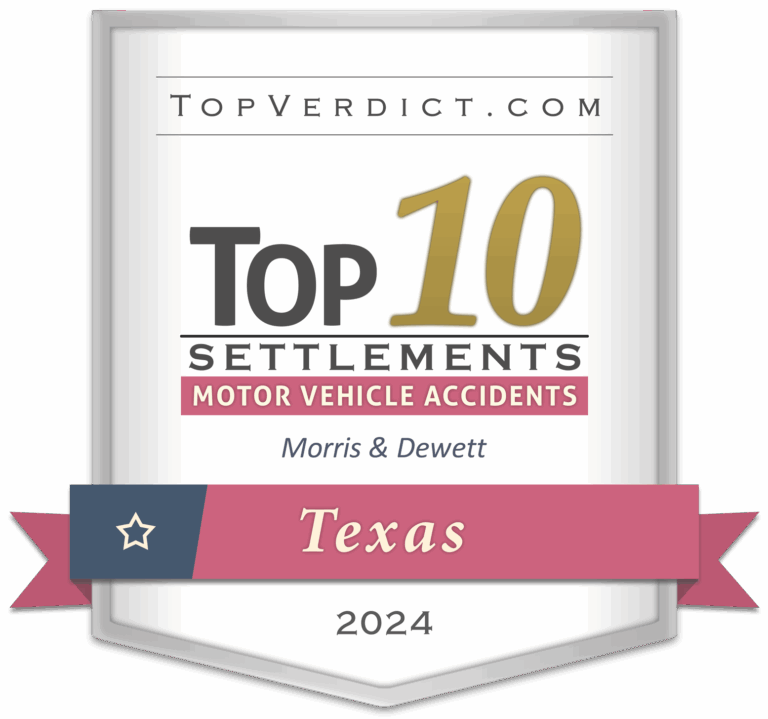
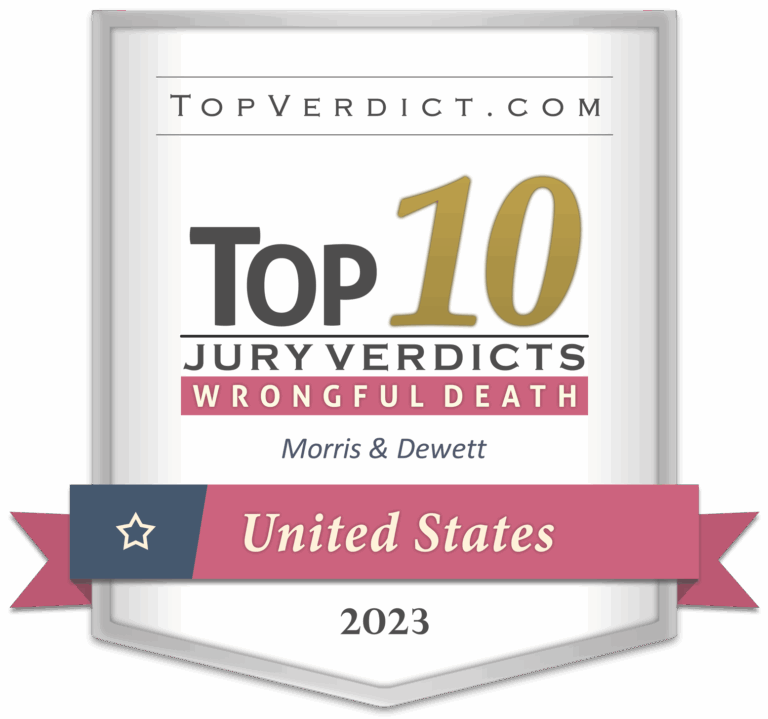
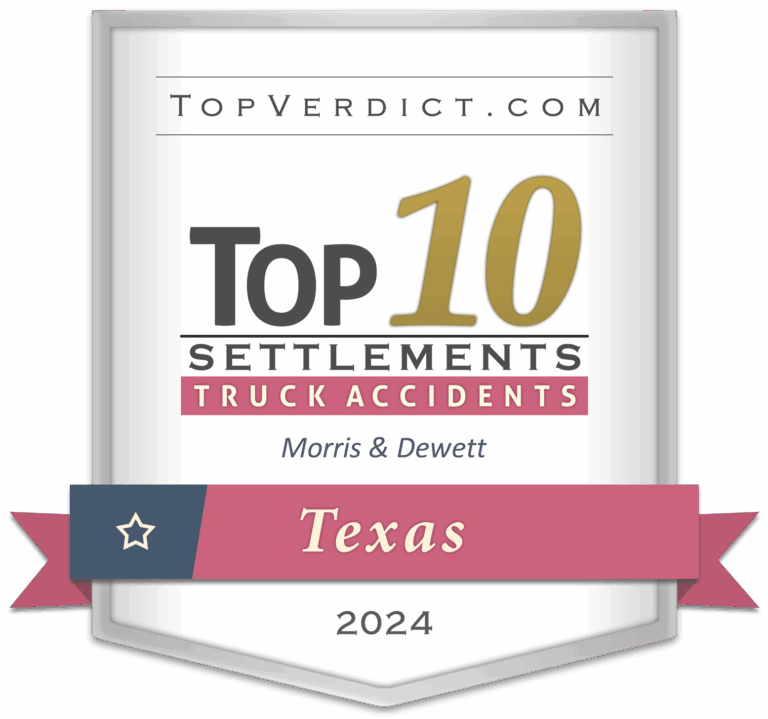
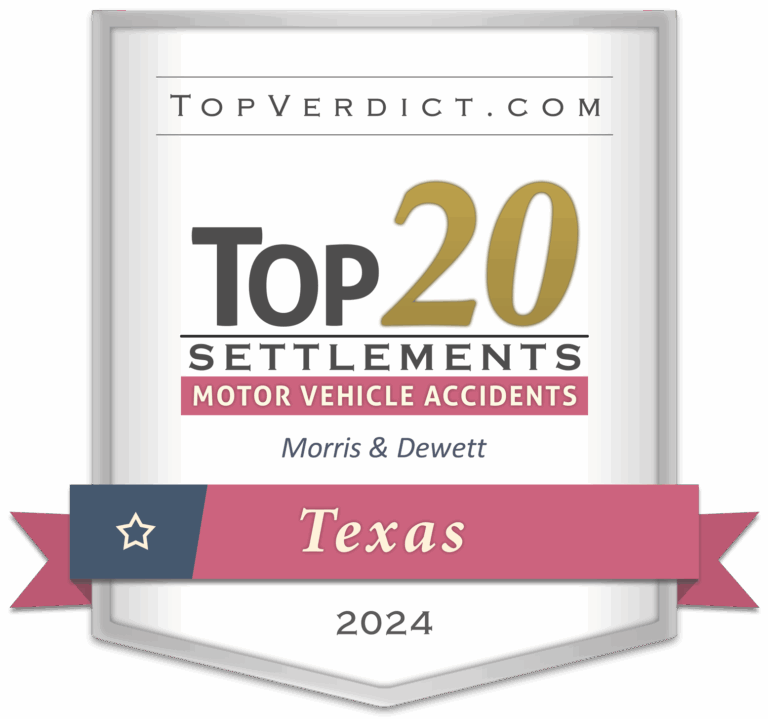
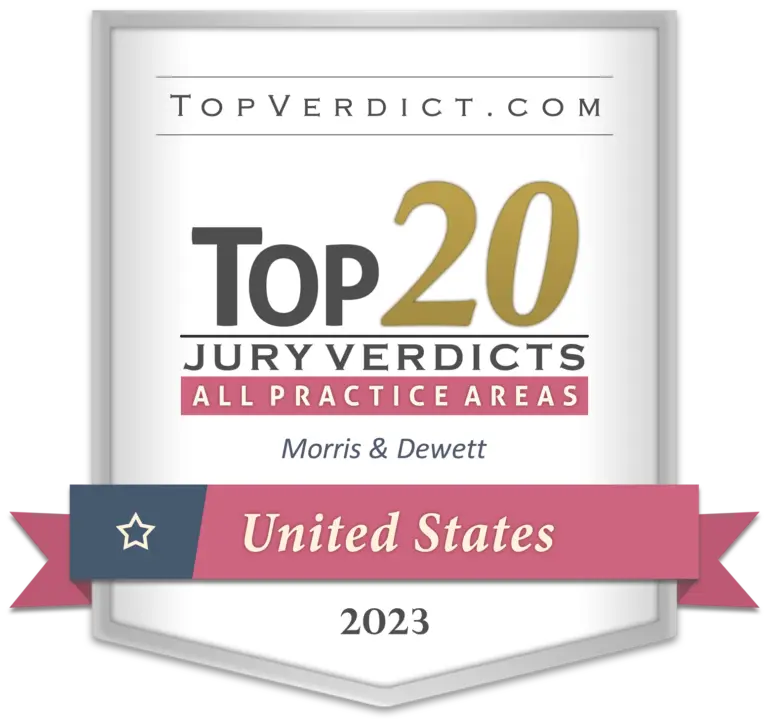
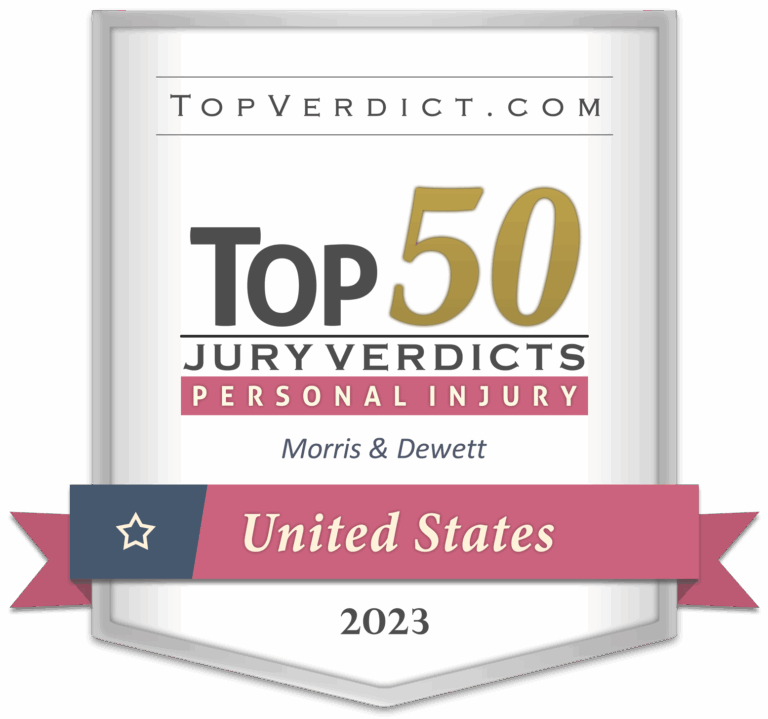

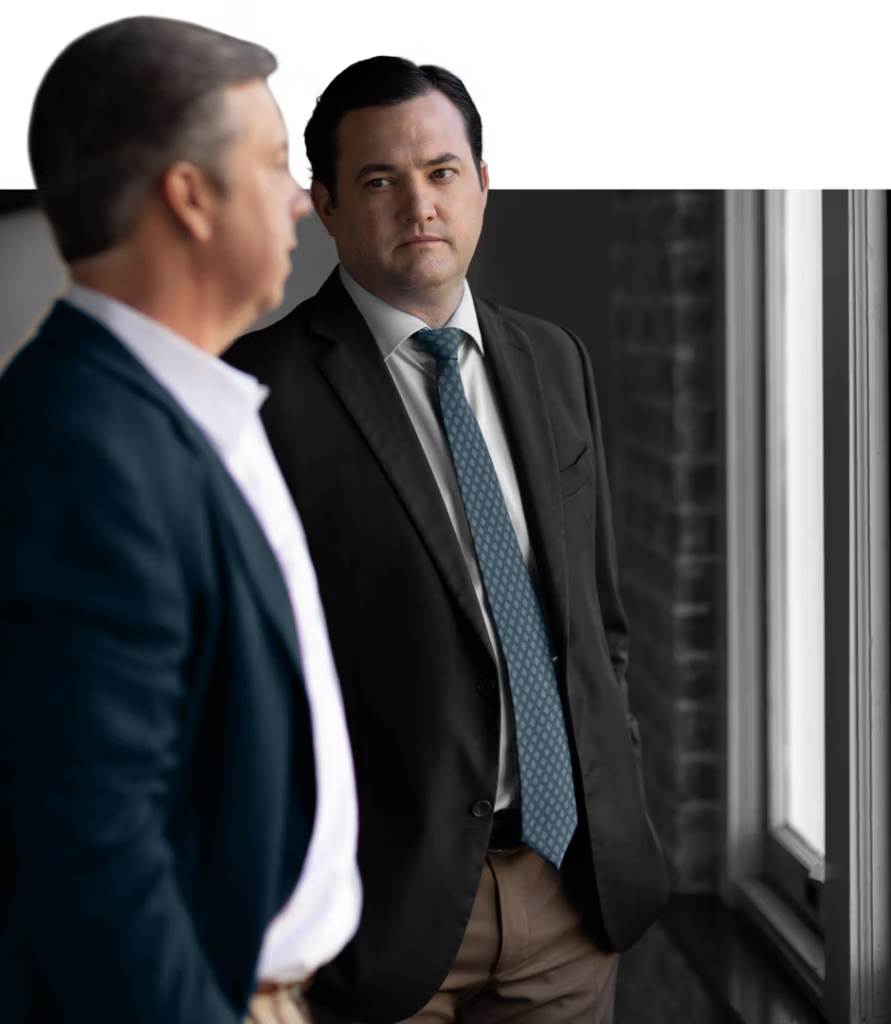
"I quickly, learned two rules in this business.
First, defendants in an injury suit put up obstacles and barriers. They want the case to take as long as possible, because it wears the plaintiff down. I have learned that if you run at those barriers hard enough, and fast enough, many of them will disappear.
Second, "The fastest way to settle a case is to prepare for trial. Insurance companies know which firms will go to court, which will not, and who can win. It is important to choose a firm that is committed to the results you want.”

Our team of intake specialists is ready to listen to you and gather all the information for a free, confidential case evaluation. We will hear you out, take what you say seriously, and then round up with our legal team.
Our lawyers will provide you with no-obligation feedback on your case, usually on the same day, but no later than 24 hours. We will give you the appropriate course of action for your situation.
If your case is a good fit for our firm and you graciously allow us to represent you, our team will begin working immediately. We will investigate, send the appropriate letters to stop insurance companies from harassing you, and start your medical recovery.
Our internal process is transparent with high levels of communication from the opening of your case to the final handshake. Our firm will promptly return your phone calls and keep you informed. You will know the exact status of your case. Our case managers and attorneys are committed to making a difficult situation as stress-free as possible.
Wrongful Death Caused By An Impaired Driver Of A Commercial Vehicle
Motor Vehicle Accident Involving An Impaired Driver Resulting In Serious Injury
oil field safety violation resulting in severe spinal & brain injury
A commercial vehicle ran a red light causing a collision resulting in serious injury
rear end car collision leading to severe injury
HVAC safety violation resulting in electrocution
Vehicle Safety violation resulting in severe neck & back injury
18 Wheeler Accident Caused A Wrongful Death
Wrongful death caused by commercial vehicle striking a pedestrian
a rear-end collision sent client over guardrail resulting in major injury
18 Wheeler lost load on highway resulting in accident causing serious bodily injury
commercial vehicle accident
18 wheeler failed to stop caused accident resulting in brain injury
Neck & Back injury from a multi-vehicle wreck
aggressive driving caused a motor vehicle accident
18 Wheeler reversed into client
18 Wheeler trailor swung into client causing serious injury
18 Wheeler improper lane merge caused a serious accident
18 Wheeler collision caused severe neck and back injuries
injuries sustained by a multi-vehicle wreck caused by poor driving
motor vehicle accident caused by a motorist running a red light
sexual abuse violation
multi-vehicle rear end collision
driving safety violation resulting in neck and back injuries
motor vehicle accident causing back and brain injury
18 wheeler collision caused a wrongful death
erratic driver caused severe accident by crossing over lanes
A premises liability case with spinal injury
back injury resulting from a motor vehicle accident
wrongful death resulting from rear-end auto accident
wrongful death resulting from a motorcycle accident
commercial vehicle collision
rear-end motor vehicle collision
commercial vehicle accident with a cement truck
sexual abuse violation
commercial vehicle caused a T-Bone collision
rear-end collision caused neck and back injuries
commercial vehicle rear-ended client resulting in spinal injury
18 wheeler rear-ended client causing severe injury
commercial vehicle spilled hydraulic fluid in highway lead to multi-vehicle accident
commercial vehicle ran a read light causing a collision
commercial vehicle spilled hydraulic fluid in highway lead to multi-vehicle accident
Commercial vehicle rear-ended client
Commercial vehicle rear-ended caused multi-vehicle accident
driver safety violation resulted in serious neck injury
Motor vehicle accident caused by driver crossing over lanes into oncoming traffic
a T-Bone motor vehicle collision caused client vehicle to flip and roll
18 wheeler ran a stop sign causing a serious motor vehicle accident
a rear-end motor vehicle accident resulting in serious injury
18 wheeler lost load on highway resulting in serious injury
18 wheeler caused serious accident
a rear-end collision vehicle accident
a rear-end collision vehicle accident
motor vehicle accident caused by illegal passing
medical malpractice causing serious leg injury
Commercial Vehicle lost control of trailer resulting in serious back and neck injury
Crane operator was struck by a falling pole
T-Bone motor vehicle accident
A commercial vehicle failed to yield causing a severe accident
product failure resulted in leg injury
Failure to use lighting on an 18-wheeler log truck caused a serious accident
wrongful death caused by an 18 wheeler accident
motor vehicle accident caused by a failure to yield
motor vehicle accident caused by a rear-end collision
commercial vehicle in reverse collided with client
failure to yield resulted in a serious motor vehicle accident
motor vehicle accident caused by a failure to yield
18 wheeler caused a rollover accident
18 wheeler rear ended client
driving safety violation resulting in serious injury
commercial vehicle rear-ended client while at a complete stop
client vehicle rear-ended at high speed
motor vehicle accident resulted in severe neck injury
commercial vehicle accident
tow truck failed to secure load resulting in severe injury
18 wheeler failed to yield at an intersection
motor vehicle accident caused by a rear end collision
a rear end collision caused by a failure to stop at a sign
a T-Bone collisions resulted in a multi-vehicle accident
commercial vehicle accident
a head-on auto collision
a motor vehicle accident resulting in serious injury